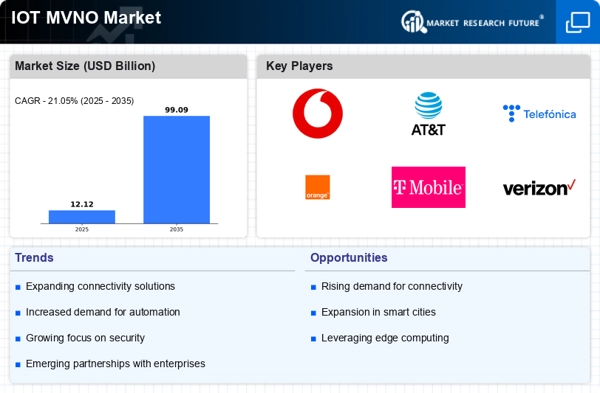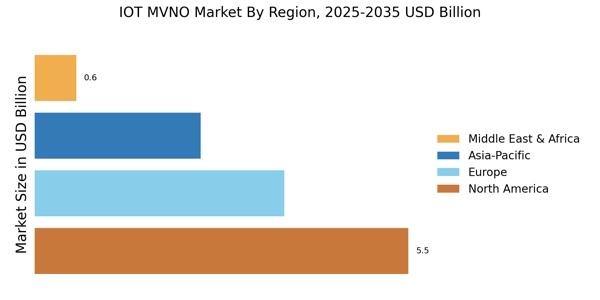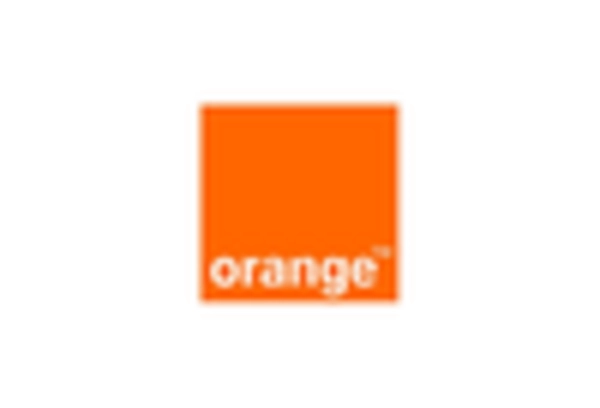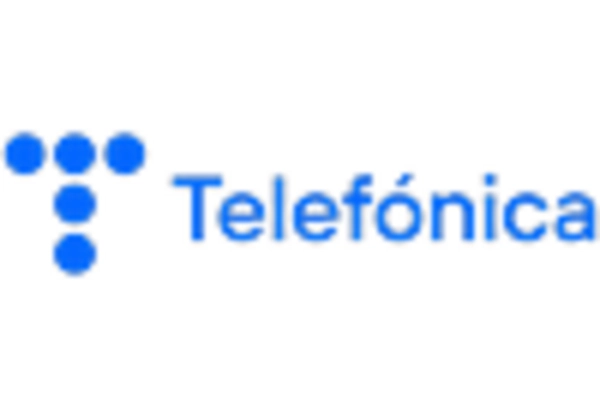Cost Efficiency and Flexibility
Cost efficiency remains a pivotal driver within the IOT MVNO Market, as businesses seek to optimize their operational expenditures. MVNOs offer flexible pricing models that allow enterprises to scale their IoT deployments without incurring prohibitive costs. This flexibility is particularly appealing to small and medium-sized enterprises that may lack the resources to invest in traditional mobile network infrastructure. By leveraging MVNO services, these businesses can access advanced IoT solutions while maintaining budgetary control. Market analysis indicates that companies utilizing MVNOs for IoT connectivity can reduce their overall costs by up to 30%, thereby enhancing their competitive edge. This cost-effective approach is likely to attract a broader range of customers, further fueling growth within the IOT MVNO Market.
Regulatory Support and Compliance
Regulatory frameworks are increasingly shaping the IOT MVNO Market, as governments recognize the importance of IoT in driving economic growth and innovation. Supportive regulations can facilitate the deployment of IoT solutions, ensuring that MVNOs operate within a structured environment that promotes fair competition and consumer protection. Compliance with data privacy and security regulations is also becoming a critical concern for businesses, prompting MVNOs to enhance their offerings to meet these standards. As regulatory bodies establish clearer guidelines, MVNOs that proactively adapt to these changes may gain a competitive advantage. The potential for government incentives and funding for IoT initiatives further underscores the importance of regulatory support in fostering growth within the IOT MVNO Market.
Advancements in Network Technologies
Technological advancements in network infrastructure are significantly influencing the IOT MVNO Market. The rollout of 5G networks is particularly transformative, providing enhanced speed, lower latency, and greater capacity for connected devices. This evolution in network technology enables MVNOs to offer superior IoT services, catering to applications that require real-time data transmission and high reliability. As 5G adoption accelerates, MVNOs are poised to capitalize on the increased demand for high-performance IoT solutions. Industry reports suggest that the 5G IoT market could reach a valuation of over 700 billion by 2026, underscoring the potential for MVNOs to expand their service portfolios and attract new clients. Consequently, advancements in network technologies are likely to be a key driver of growth in the IOT MVNO Market.
Rising Demand for Connectivity Solutions
The IOT MVNO Market is experiencing a notable surge in demand for connectivity solutions, driven by the proliferation of connected devices across various sectors. As industries increasingly adopt IoT technologies, the need for reliable and scalable connectivity becomes paramount. According to recent data, the number of connected devices is projected to reach 30 billion by 2030, indicating a substantial market opportunity for MVNOs specializing in IoT services. This rising demand compels MVNOs to innovate and enhance their service offerings, ensuring they can meet the diverse connectivity needs of businesses. Furthermore, the shift towards smart cities and automated processes further amplifies the necessity for robust IoT connectivity, positioning MVNOs as critical players in this evolving landscape.
Emergence of Industry-Specific Applications
The emergence of industry-specific applications is a significant driver within the IOT MVNO Market, as businesses seek tailored solutions to address unique operational challenges. Sectors such as healthcare, agriculture, and transportation are increasingly adopting IoT technologies to enhance efficiency and productivity. MVNOs are responding by developing specialized services that cater to the distinct needs of these industries, thereby creating new revenue streams. For instance, the healthcare sector is leveraging IoT for remote patient monitoring, while agriculture is utilizing IoT for precision farming. Market projections indicate that the demand for industry-specific IoT solutions could grow by over 25% annually, highlighting the potential for MVNOs to capitalize on this trend. This focus on tailored applications is likely to drive innovation and growth within the IOT MVNO Market.
























Leave a Comment